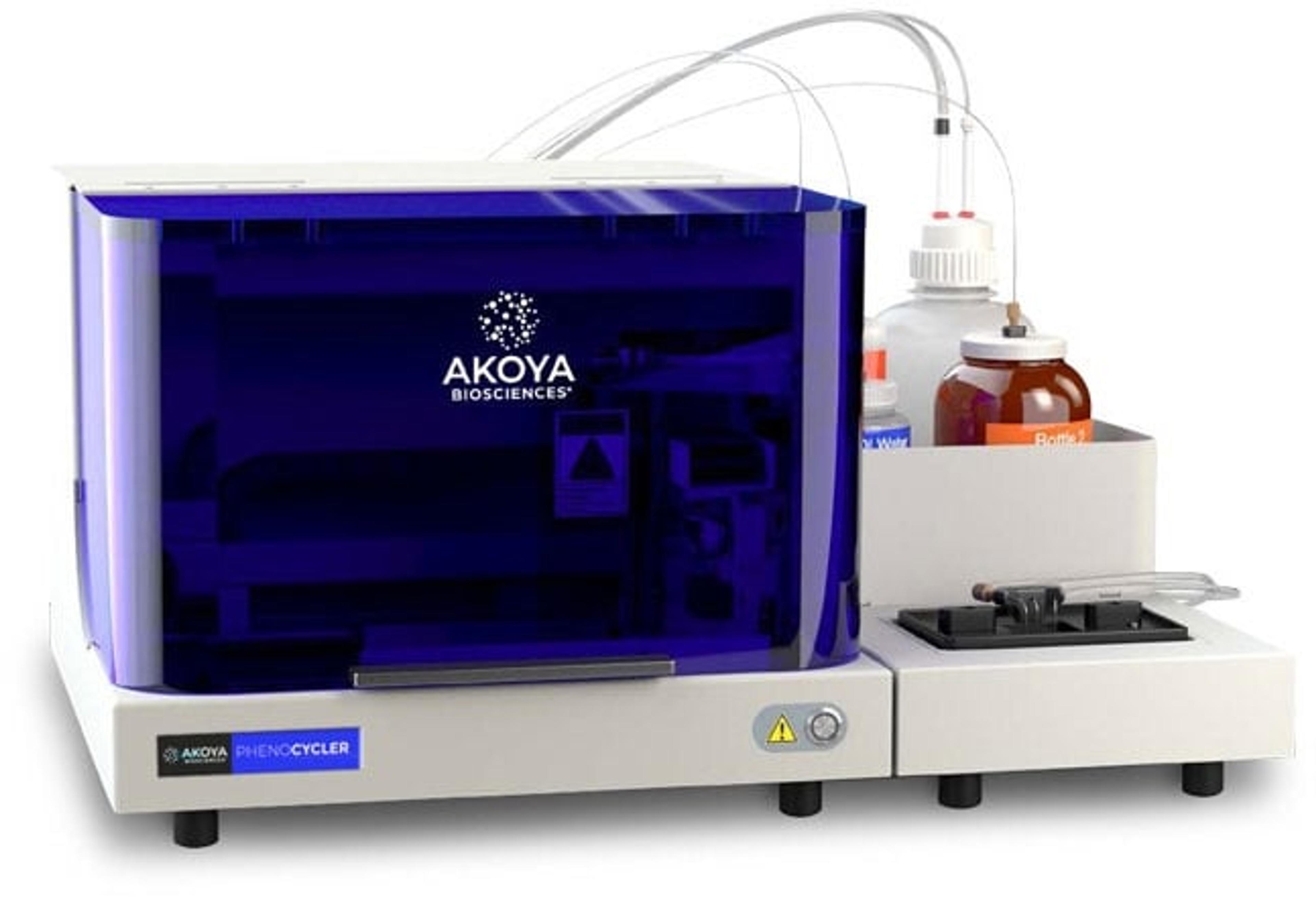Study Shows Spatial Biology Is Essential for Predicting Response to Immuno-Oncology Treatment
Akoya Biosciences determines that multiplex immunofluorescence technology preserves critical data missed by other biomarker strategies
30 Jul 2019Akoya Biosciences, Inc., The Spatial Biology Company™, has announced that an in-depth comparison of immuno-oncology biomarker types conducted by scientists at Johns Hopkins University, Yale University, and other institutions determined that multiplex immunofluorescence with spatial characterization significantly outperformed other biomarker testing approaches — such as gene expression profiling, tumor mutational burden assessment, and immunohistochemistry — for predicting patient response to treatments targeting PD-1/PD-L1. The study was published in JAMA Oncology.
Multiplex immunofluorescence, a new type of biomarker assay, allows investigators to simultaneously analyze the expression of many proteins in individual cells within the tumor microenvironment, preserving critical information about which cells are active and how they are spatially distributed relative to each other. This type of analysis is made possible with the end-to-end solutions offered by Akoya: the CODEX® System, an ultra-high multiplexing platform for biomarker discovery, and Phenoptics™, a high-throughput multiplexing platform for translational and clinical research.
Immunotherapies targeting PD-1 or PD-L1 have proven remarkably effective for treating cancer in some patients, but there remains a paucity of accurate biomarkers that can differentiate responders from non-responders. Identifying the patients most likely to respond to these therapies is an important step in ensuring optimal outcomes for all patients. To date, several assays have been developed with the potential to predict response based on genetic signatures, gene expression, and immunohistochemistry. Although these assays are helpful in limited situations, there is a need for options that are better at predicting response across a larger percentage of cases.
The study, conducted in collaboration with leading scientists at Johns Hopkins University, Yale University, Vanderbilt University, and Northwestern University, reviewed published data from more than 50 studies covering more than 10 types of cancer and over 8,000 patients. Statistical analyses were performed to assess the performance and predictive value of each type of biomarker. While tumor mutational burden, gene expression profiling, and immunohistochemistry had comparable performance to each other for differentiating between responders and non-responders, multiplex immunofluorescence had considerably better performance metrics. Specifically, it had fewer false positives, meaning it was less likely to predict positive response in a patient who would not ultimately respond to therapy.
“This meta-analysis of previous studies clearly demonstrates the potential for using multiplex immunofluorescence to generate more comprehensive and reliable data to better predict response to anti-PD-1/PD-L1 treatments,” said Cliff Hoyt, Vice President of Translational and Scientific Affairs at Akoya and a co-author of the paper. “This contributes to growing evidence that spatial resolution of tumor biomarkers is essential for an accurate view of cancer biology, and the Akoya team is excited to help researchers continue down this promising avenue of investigation.”
By performing an sROC curve evaluation, the authors of the JAMA Oncology publication cited multiplex immunofluorescence and multiplex immunohistochemistry (AUC of 0.79) as having significantly higher diagnostic predictive accuracy when compared to PD-L1 immunohistochemistry (AUC of 0.65, P<.001). Additionally, it outperformed both gene expression profiling (AUC of 0.65, P=.003) and tumor mutation burden (AUC of 0.69, P=.049).
“Immunotherapies represent the latest advance in cancer treatment, and this important study shows that the multiplex immunofluorescence technology underlying our systems can serve to more accurately stratify patients for optimal outcomes,” said Brian McKelligon, Chief Executive Officer of Akoya. “Of the approaches available for spatially resolving biomarkers, the Phenoptics platform is uniquely suited to fulfill the most critical needs in translational research and clinical applications. Our end-to-end solutions put researchers in the best position to drive precision immuno-oncology forward in the coming years.”
For more science news, straight to your inbox, join SelectScience today >>

